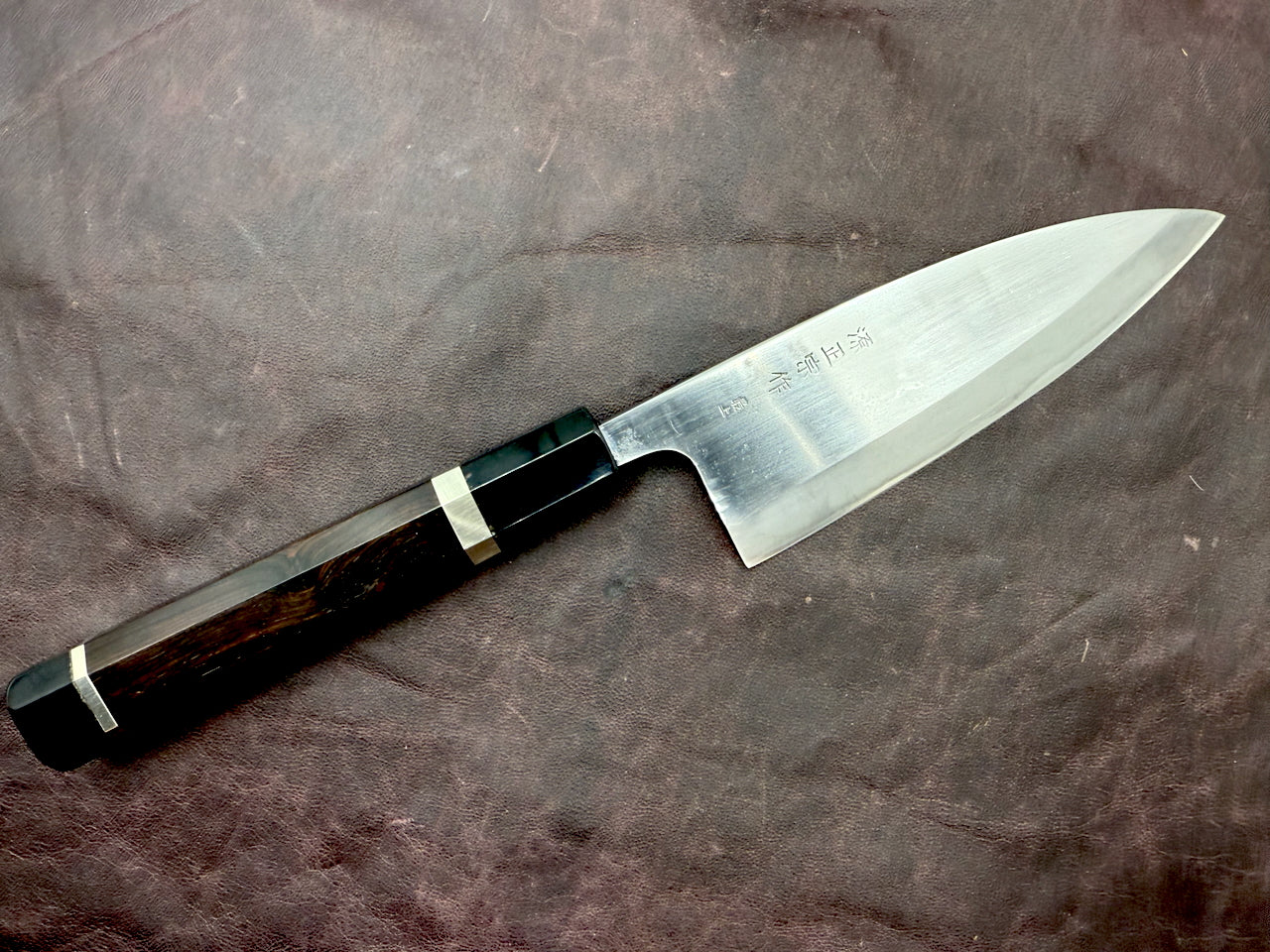
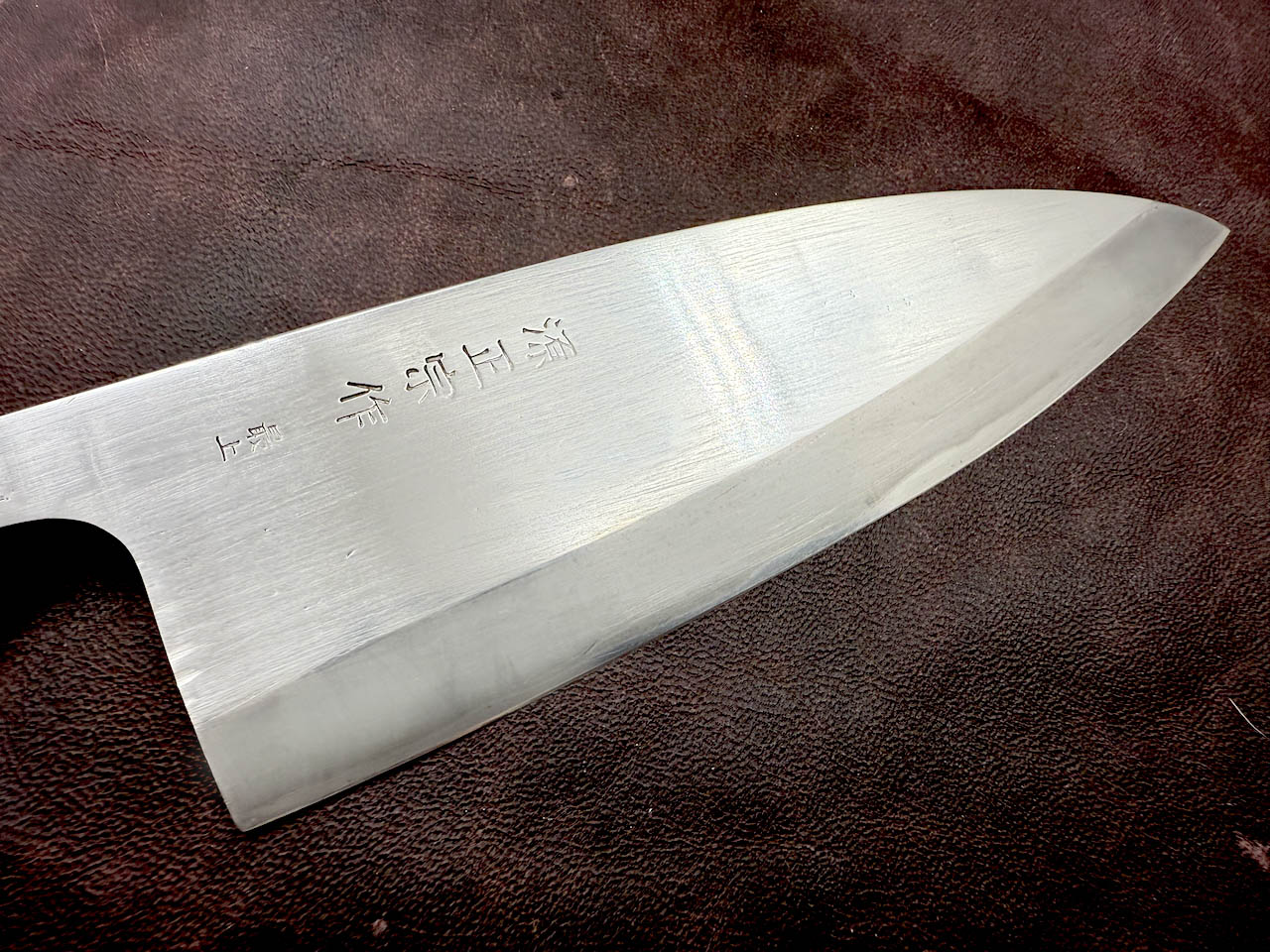
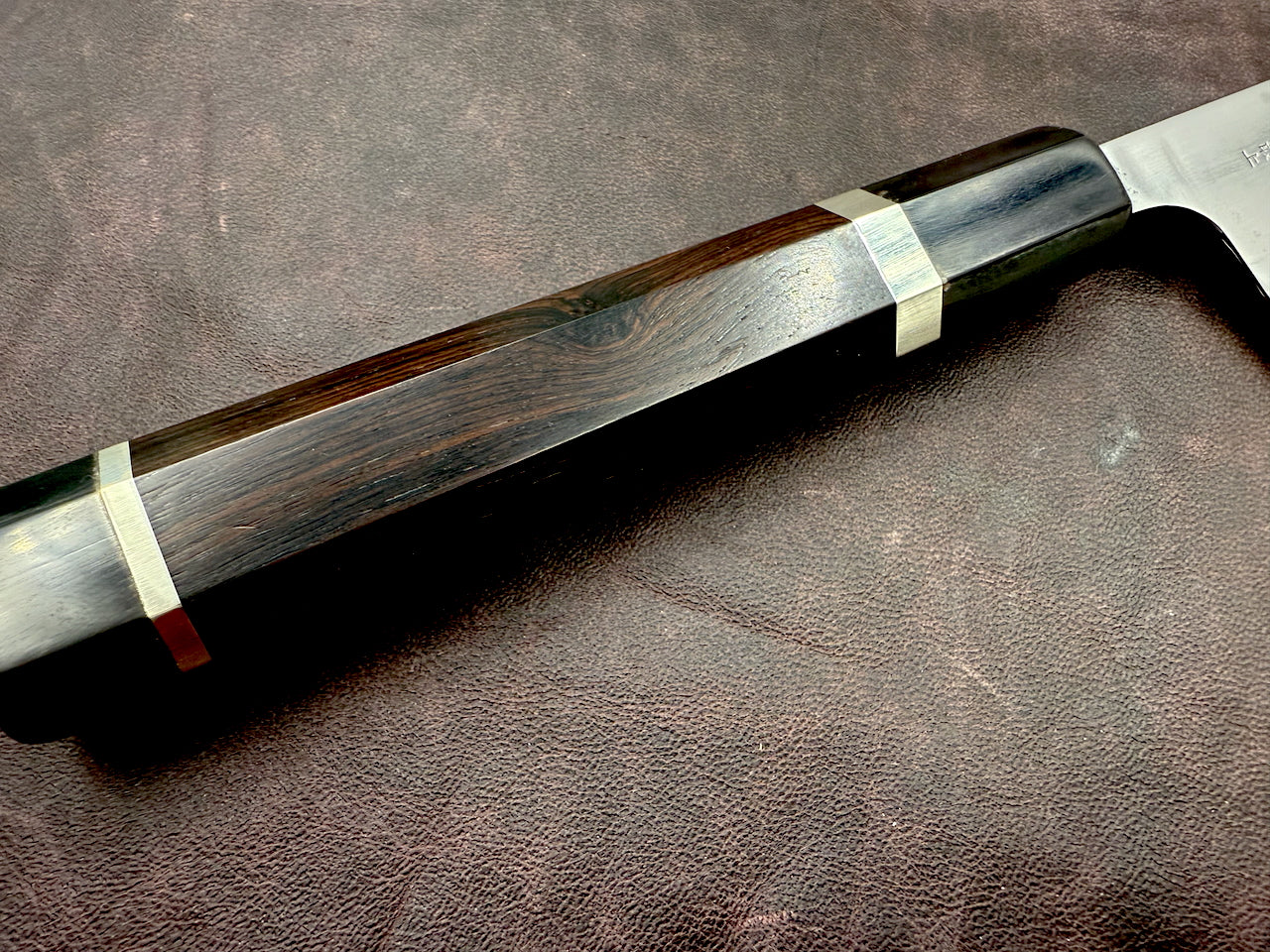
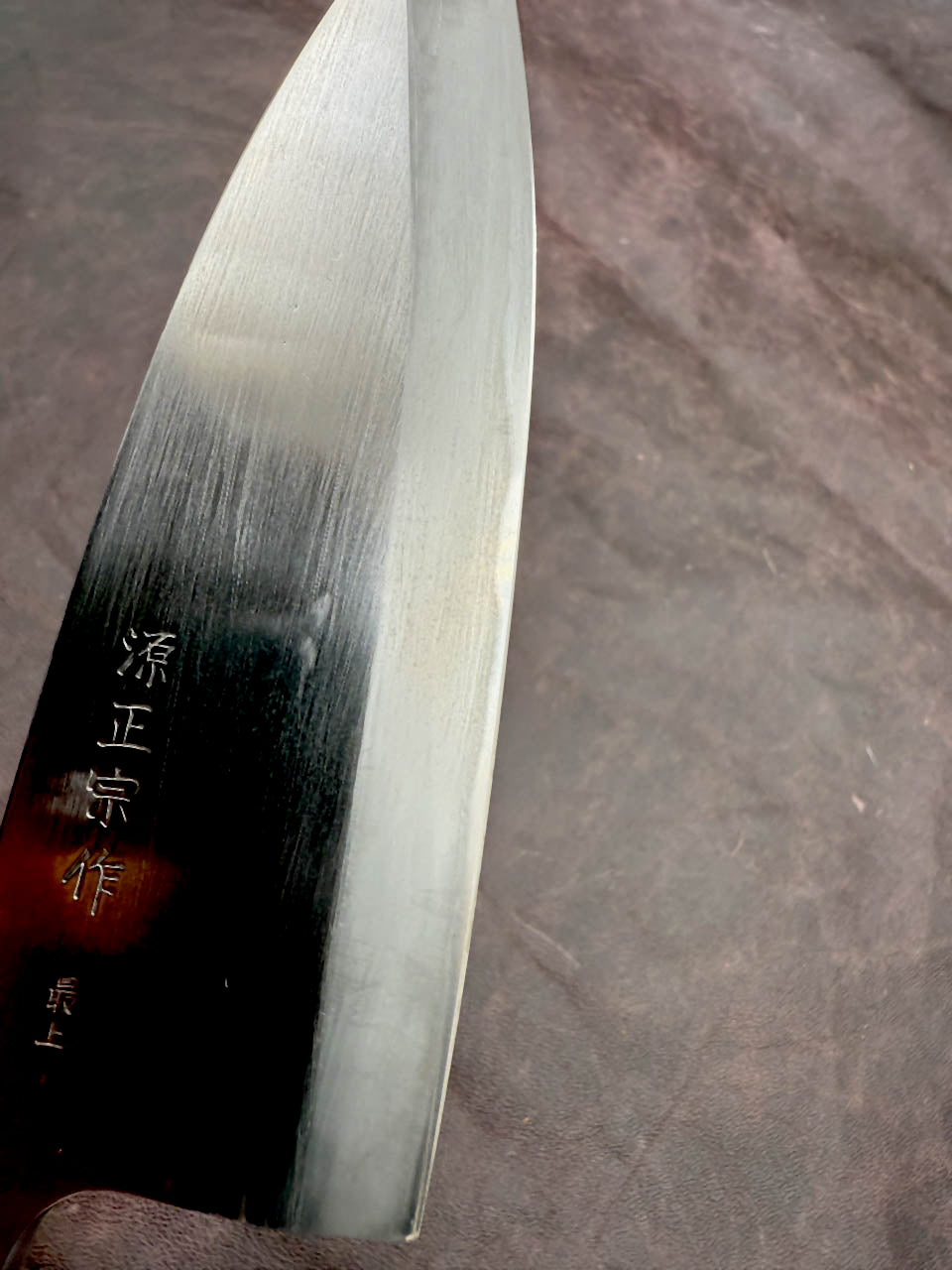
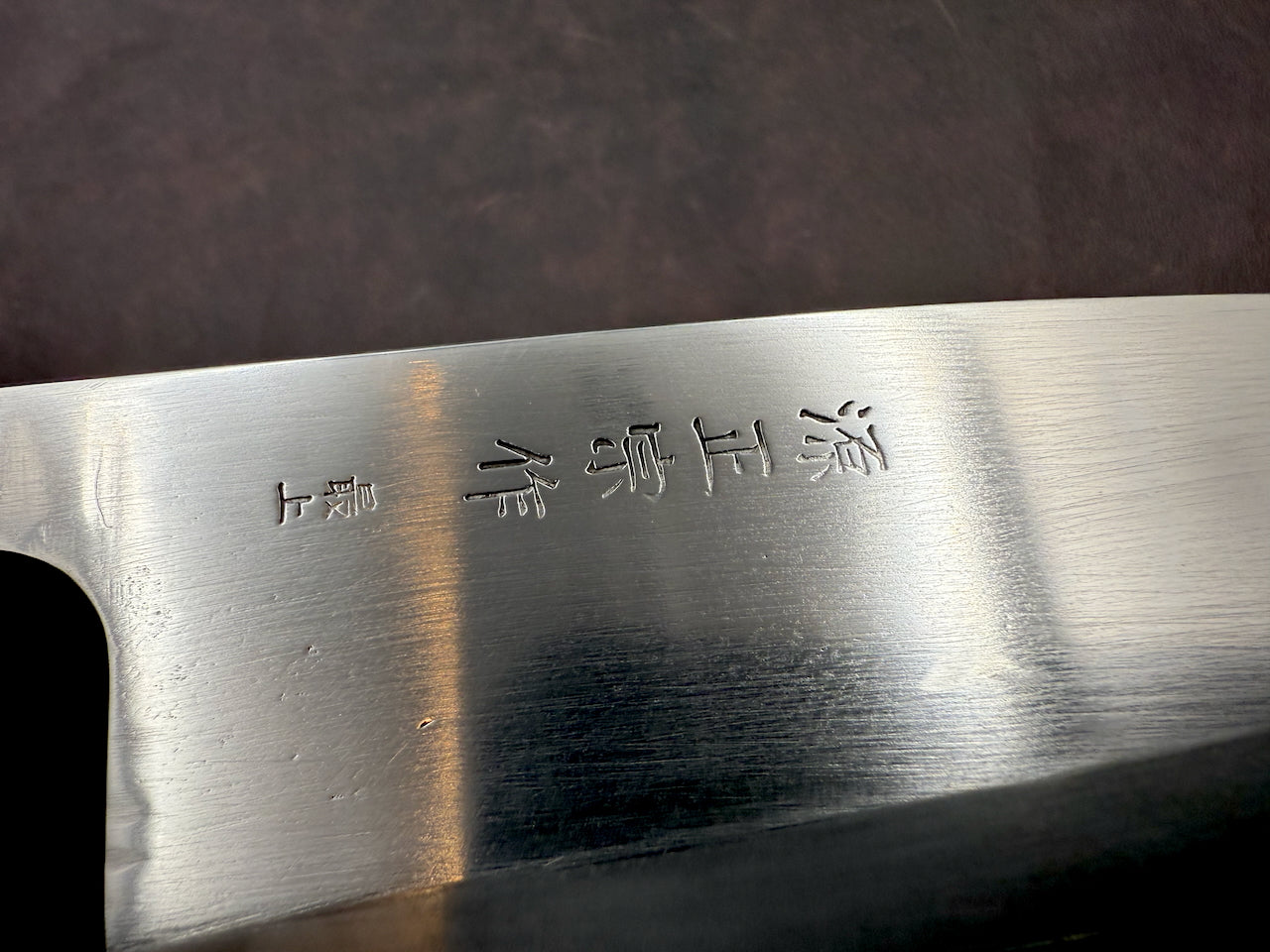
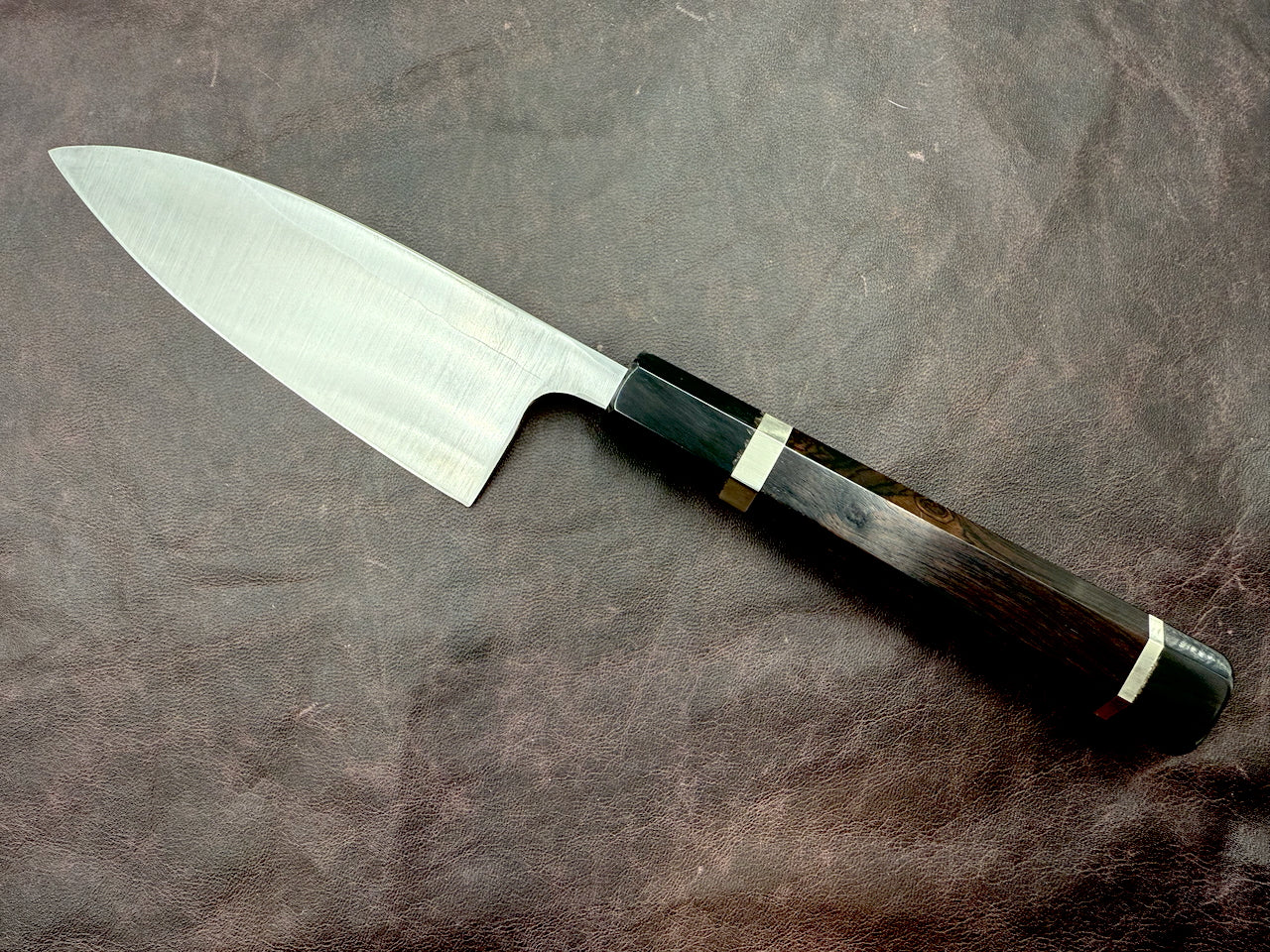
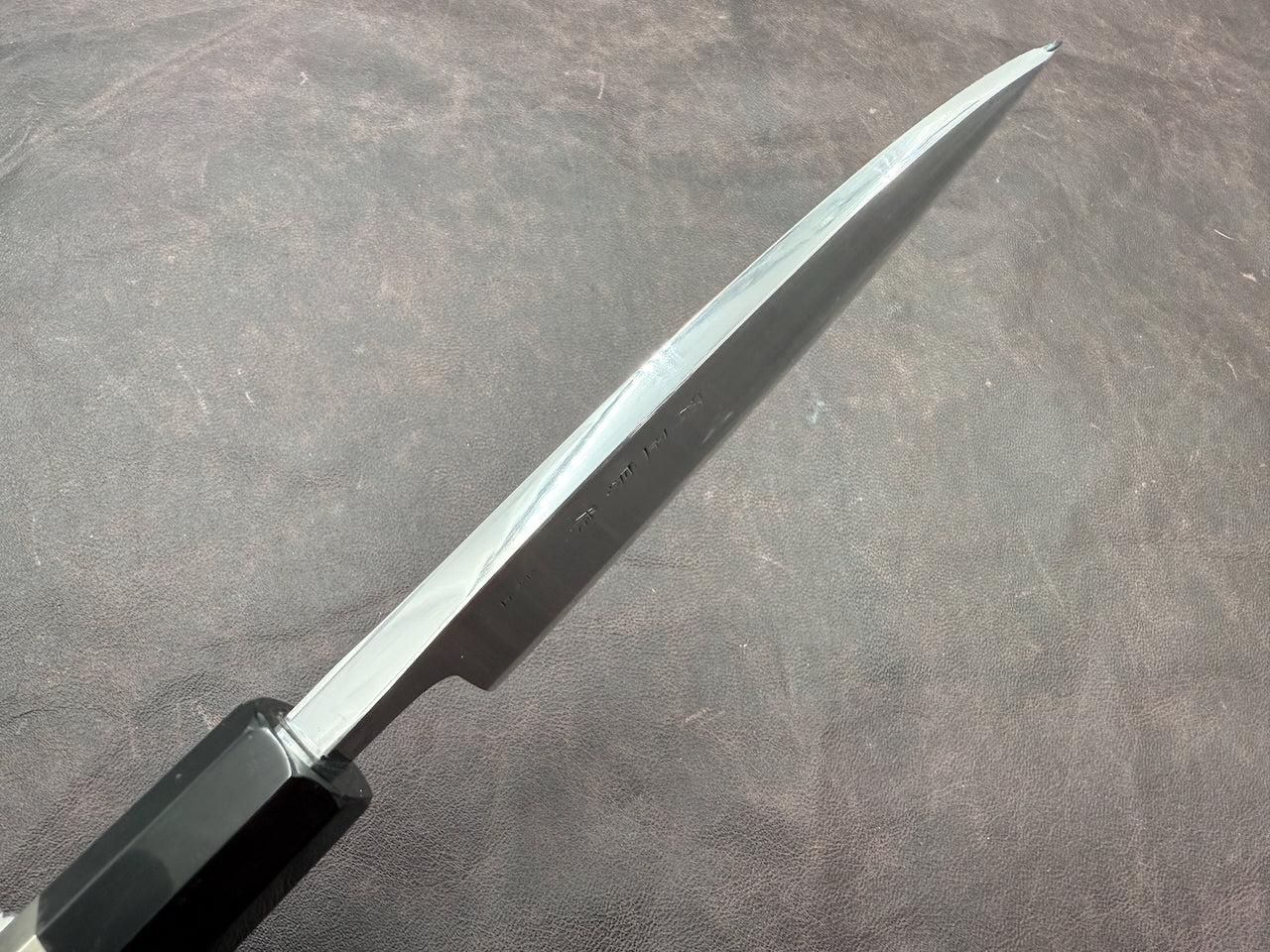
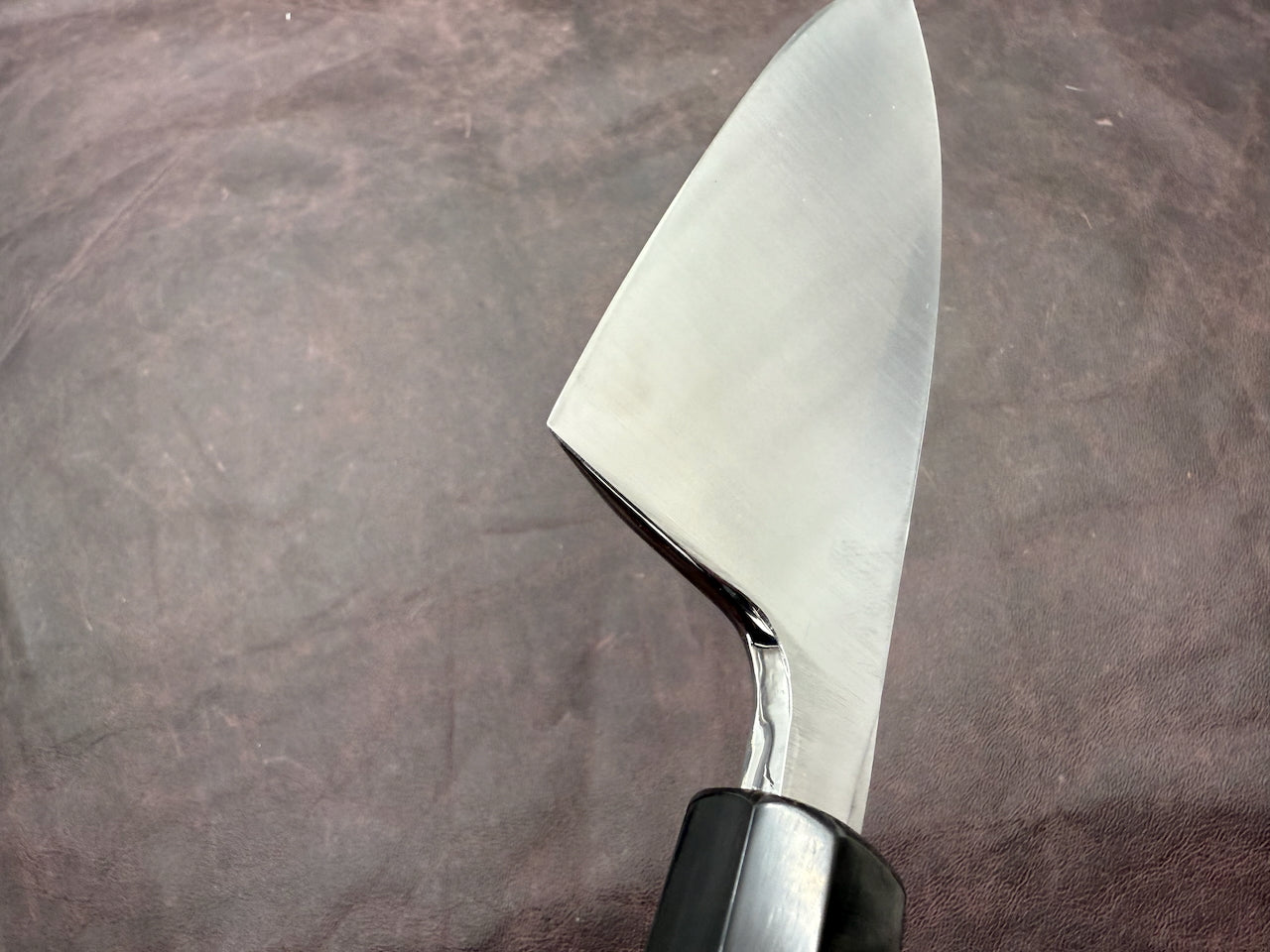
Griffith Shaving Goods
Minamoto Masamune Japanese 150mm Deba Kitchen Knife - Vintage Restored
This beautifully restored Deba is in pristine condition and has many years of life remaining. It has been fully reground, polished and shows a lovely kasumi finish on the bevel and has been sharpened, fully ready for use. This Deba is perfect for medium to small fish butchery and poultry butchery. The steel is very easy to sharpen and is likely Shirogami #2 ((Also known as White Paper Steel #2, a high-carbon Japanese steel made by Hitachi Metals, prized in traditional Japanese knife-making for its extreme sharpness and ease of sharpening). The new custom handle is octagonal ebony with metal spacer and black buffalo horn ferrule. The knife has a 150mm cutting edge and 305mm overall length.
源正宗作 (Minamoto Masamune Saku): The 作 (saku) means "made" or "crafted." 源正宗 (Minamoto Masamune) appears to be the maker’s name. This is followed by 最上 (Saijou), which means "the best."
The Japanese Deba knife (出刃包丁, deba bōchō) is a traditional Japanese kitchen knife primarily used for butchering fish, although it's also suitable for cutting meat and poultry with small bones.
Key Characteristics:
-
Blade Shape: Thick, broad blade with a pointed tip. The heel of the blade is very sturdy, ideal for cutting through fish heads and small bones, while the tip is precise enough for filleting.
-
Blade Thickness: Much thicker and heavier than most Japanese knives, giving it the power needed for heavier cuts.
-
Single Bevel: Traditionally, Deba knives are single-beveled (usually for right-handed users), meaning one side is flat while the other is ground. This allows for more precise and cleaner cuts, especially when filleting fish.
Primary Uses:
-
Breaking down whole fish (cutting through heads, bones, and filleting)
-
Chopping meat and poultry (small bones only—it's not meant for hacking through large bones like a cleaver)
